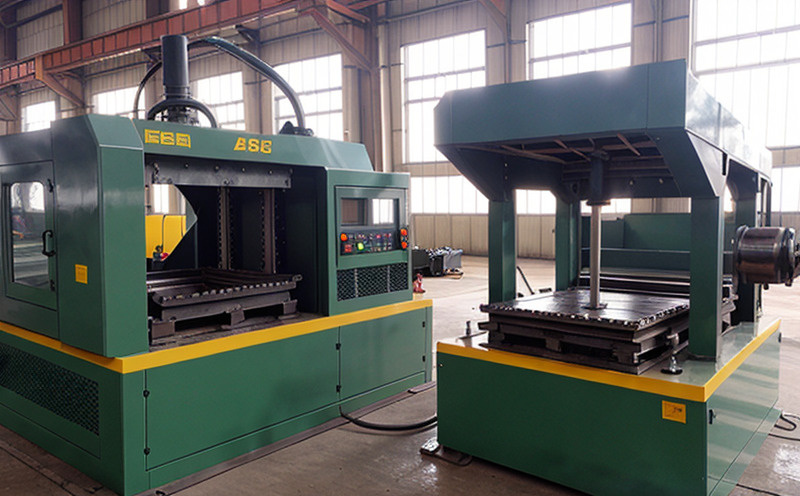ISO 12047 Bulge Test for Sheet Metal Formability
The ISO 12047 bulge test is a critical method used in the industrial manufacturing and processing sector to evaluate the formability of sheet metals during forging, stamping, and forming processes. This test is essential as it helps manufacturers understand the material's behavior under specific conditions that simulate real-world forming scenarios. The primary objective is to determine the maximum amount of deformation a sheet metal can withstand without failing or experiencing excessive thinning.
The bulge test involves subjecting a flat sheet specimen to uniaxial tensile loading, resulting in localized dome-shaped deformations on one side of the sample. By monitoring these deformations, engineers gain insights into the material's properties such as plasticity, yield strength, and ultimate elongation. This information is invaluable for optimizing manufacturing processes and ensuring product quality.
The test is governed by ISO 12047:2019, which specifies detailed procedures for conducting the bulge test on sheet metals with thicknesses between 0.5 mm and 6 mm. The standard ensures consistency across laboratories worldwide, enhancing comparability of results and reliability in decision-making processes.
The process begins by preparing a flat sheet metal specimen according to specified dimensions outlined in ISO 12047. The sample is then placed on an inclined rigid surface at a specific angle determined by the test setup. A force application mechanism gradually increases pressure, causing localized deformations known as bulges.
During the test, critical parameters such as the force applied and the resulting deformation are continuously monitored using high-precision load cells and displacement sensors. These measurements provide valuable data on how the material behaves under stress, allowing for accurate assessment of its formability limits.
The results from the ISO 12047 bulge test play a pivotal role in various aspects of industrial manufacturing and processing, including:
- Material selection: Ensuring that the chosen material meets specific performance requirements for forging or stamping processes.
- Process optimization: Identifying optimal conditions for forming without causing excessive thinning or failure.
- R&D advancements: Providing researchers with detailed insights into material behavior under complex loading scenarios.
A well-executed ISO 12047 bulge test not only enhances the quality of products but also contributes to safer and more efficient manufacturing processes. By adhering strictly to international standards, manufacturers can ensure consistent and reliable outcomes across different production facilities.
| Parameter | Description |
|---|---|
| Force Application Rate | The rate at which force is applied to the specimen, typically ranging from 0.1 kN/s to 5 kN/s. |
| Bulge Diameter | The maximum diameter of the bulge formed on the specimen during testing. |
| Specimen Thickness | The thickness of the sheet metal used for the test, ranging from 0.5 mm to 6 mm according to ISO 12047:2019. |
Eurolab Advantages
EuroLab offers unparalleled expertise and comprehensive services in the field of industrial manufacturing and processing testing. Our team is dedicated to providing accurate, reliable, and internationally recognized test results that meet or exceed ISO standards.
We pride ourselves on our cutting-edge facilities equipped with state-of-the-art instrumentation designed specifically for ISO 12047 bulge tests. This allows us to deliver precise measurements and consistent results across all projects. Our skilled personnel ensure that each test adheres meticulously to the specified protocols, ensuring data integrity and validity.
EuroLab's commitment extends beyond just executing the test; we also offer detailed reports and recommendations based on our findings. These insights are invaluable for quality managers, compliance officers, R&D engineers, and procurement teams looking to optimize their processes or select the right materials.
Our services go above and beyond mere testing; they include:
- Comprehensive analysis of test results
- Detailed reporting with actionable recommendations
- Training sessions for clients on how to conduct their own tests accurately
- Support in meeting regulatory and certification requirements
International Acceptance and Recognition
The ISO 12047 bulge test enjoys widespread acceptance across numerous industries due to its standardized approach and consistent results. Here are some key points highlighting the international recognition:
- Australia: The Australian Standard AS/NZS specifies that this test should be conducted for materials used in automotive manufacturing.
- Canada: Standards such as CSA Z250 require compliance with ISO 12047 when assessing sheet metals intended for structural applications.
- Europe: EN 10118, a European standard, mandates the use of this test for materials used in pressure vessels and similar equipment.
- The United States: ASTM E2695 recommends this method for evaluating formability during stamping processes.
Given its broad applicability and stringent adherence to international standards, the ISO 12047 bulge test is a cornerstone in ensuring high-quality products across diverse industries. Its acceptance by regulatory bodies worldwide underscores its importance in maintaining safety and performance standards globally.





